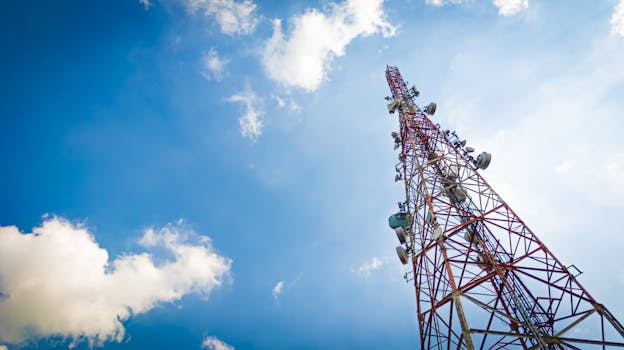
GEO satellites, or Geostationary satellites, are a type of satellite that orbits the Earth at an altitude of approximately 36,000 kilometers, remaining stationary relative to a fixed point on the equator. This unique orbit allows GEO satellites to provide continuous coverage of a specific region, making them ideal for a wide range of applications, including telecommunications, weather forecasting, and navigation.
GEO satellites have been in use for decades, with the first geostationary satellite, Syncom 2, launched in 1963. Since then, the technology has evolved significantly, with modern GEO satellites offering higher bandwidth, greater reliability, and improved performance. Today, GEO satellites play a vital role in global telecommunications, providing internet connectivity, television broadcasting, and mobile phone services to millions of people around the world.
One of the key advantages of GEO satellites is their ability to provide high-speed data transfer over long distances. This makes them particularly useful for applications such as video conferencing, online gaming, and cloud computing. Additionally, GEO satellites can be used to provide backup connectivity in the event of a terrestrial network outage, ensuring that critical communications systems remain operational.
In addition to their use in telecommunications, GEO satellites also have a number of other applications. For example, they are used in weather forecasting to provide high-resolution images of cloud patterns and storm systems. They are also used in navigation, providing location information and timing signals for GPS and other satellite navigation systems.
Despite the many advantages of GEO satellites, there are also some challenges associated with their use. One of the main limitations is the latency inherent in satellite communications, which can make real-time applications such as video conferencing and online gaming more difficult. Additionally, GEO satellites are susceptible to interference from other satellites and terrestrial systems, which can impact their performance and reliability.
In recent years, there has been a growing trend towards the use of non-geostationary satellites, such as Low Earth Orbit (LEO) and Medium Earth Orbit (MEO) satellites. These satellites offer a number of advantages, including lower latency and higher bandwidth, and are being used for a range of applications, including satellite constellations and broadband internet services.
However, GEO satellites remain a crucial part of modern telecommunications, and are likely to continue to play an important role in the future. With the development of new technologies, such as high-throughput satellites and advanced propulsion systems, the capabilities and applications of GEO satellites are likely to continue to evolve and expand.
Examples of GEO satellites include the Inmarsat I-4 satellite, which provides global mobile satellite communications services, and the Intelsat 19 satellite, which offers high-speed internet connectivity and television broadcasting services. Other notable examples include the SES-9 satellite, which provides satellite broadband services to the Asia-Pacific region, and the Arabsat-6A satellite, which offers television broadcasting and telecommunications services to the Middle East and North Africa.
In conclusion, GEO satellites are a vital part of modern telecommunications, offering a range of benefits and applications. While there are challenges associated with their use, the advantages of GEO satellites make them an essential component of global communications systems. As technology continues to evolve, it is likely that GEO satellites will remain a crucial part of the telecommunications landscape, providing high-speed data transfer, global coverage, and reliable connectivity to millions of people around the world.
The development and launch of new GEO satellites is an ongoing process, with a number of new satellites scheduled for launch in the coming years. For example, the European Space Agency (ESA) is planning to launch a new series of GEO satellites, known as the European Data Relay System (EDRS), which will provide high-speed data transfer services for a range of applications, including telecommunications, navigation, and Earth observation.
Other organizations, such as NASA and the National Oceanic and Atmospheric Administration (NOAA), are also involved in the development and launch of GEO satellites. For example, NASA’s Tracking and Data Relay Satellite System (TDRSS) provides high-speed data transfer services for a range of applications, including spacecraft communications, navigation, and Earth observation.
In terms of the impact of GEO satellites on society, it is clear that they have had a profound effect on the way we communicate and access information. For example, the widespread use of satellite television and internet services has brought news, entertainment, and educational resources to millions of people around the world, many of whom would not have had access to these services otherwise.
Additionally, GEO satellites have played a critical role in the development of global telecommunications systems, enabling the transfer of large amounts of data over long distances and facilitating international communication and collaboration. They have also enabled the creation of new industries and services, such as satellite-based navigation and Earth observation, which have had a significant impact on fields such as agriculture, forestry, and environmental monitoring.
However, the use of GEO satellites also raises a number of social and environmental concerns. For example, the launch and operation of satellites can contribute to space debris, which can pose a risk to other satellites and spacecraft. Additionally, the use of satellites can raise concerns about privacy and surveillance, particularly in cases where satellites are used for military or intelligence purposes.
Despite these challenges, it is clear that GEO satellites will continue to play an important role in the development of modern telecommunications systems. As technology continues to evolve, it is likely that we will see new and innovative applications of GEO satellites, as well as the development of new technologies and systems that can help to address some of the challenges associated with their use.
GEO satellites are an essential component of modern telecommunications systems, providing high-speed data transfer, global coverage, and reliable connectivity to millions of people around the world. With their unique orbit and advanced technologies, GEO satellites have a wide range of applications, from telecommunications and navigation to weather forecasting and Earth observation.
As the demand for satellite-based services continues to grow, it is likely that we will see significant investment and innovation in the development of new GEO satellites and related technologies. This will enable the creation of new services and applications, as well as the expansion of existing ones, and will help to drive economic growth and social development in regions around the world.
In conclusion, GEO satellites are a vital part of modern telecommunications, offering a range of benefits and applications. While there are challenges associated with their use, the advantages of GEO satellites make them an essential component of global communications systems. As technology continues to evolve, it is likely that GEO satellites will remain a crucial part of the telecommunications landscape, providing high-speed data transfer, global coverage, and reliable connectivity to millions of people around the world.
History of GEO Satellites
The history of GEO satellites dates back to the 1960s, when the first geostationary satellite, Syncom 2, was launched. Since then, the technology has evolved significantly, with modern GEO satellites offering higher bandwidth, greater reliability, and improved performance.
In the early years of GEO satellite development, the main challenge was to achieve a stable and precise orbit. This was overcome with the development of new rocket technologies and the use of advanced navigation systems. Today, GEO satellites are launched into orbit using a range of launch vehicles, including the Ariane 5 and the SpaceX Falcon 9.
One of the key milestones in the development of GEO satellites was the launch of the Intelsat 1 satellite in 1965. This satellite was the first commercial GEO satellite, and it marked the beginning of a new era in satellite communications. Since then, the number of GEO satellites in orbit has grown rapidly, with hundreds of satellites now providing a wide range of services.
Another important milestone was the launch of the first GPS satellite in 1978. This marked the beginning of a new era in navigation and timing, and it paved the way for the development of modern GPS systems. Today, GPS is used in a wide range of applications, from aviation and maritime navigation to precision agriculture and surveying.
In recent years, there has been a growing trend towards the use of reusable launch vehicles, which can significantly reduce the cost of launching GEO satellites into orbit. This has made it possible for a wider range of organizations and companies to launch their own satellites, and it has helped to drive innovation and investment in the satellite industry.
Applications of GEO Satellites
GEO satellites have a wide range of applications, from telecommunications and navigation to weather forecasting and Earth observation. They are used in a variety of fields, including aviation, maritime, and land transportation, and they play a critical role in the development of modern telecommunications systems.
One of the main applications of GEO satellites is in telecommunications. They are used to provide high-speed data transfer services, including internet connectivity, television broadcasting, and mobile phone services. They are also used in navigation, providing location information and timing signals for GPS and other satellite navigation systems.
GEO satellites are also used in weather forecasting, providing high-resolution images of cloud patterns and storm systems. They are used in Earth observation, providing data on the environment, climate, and natural resources. They are also used in disaster response and recovery, providing critical communications and navigation services in the aftermath of a disaster.
In addition to these applications, GEO satellites are also used in a range of other fields, including agriculture, forestry, and environmental monitoring. They are used to provide data on crop health, soil moisture, and weather patterns, and they are used to monitor deforestation, habitat destruction, and other environmental changes.
GEO satellites are also used in the development of new technologies and services, such as satellite-based internet of things (IoT) and machine-to-machine (M2M) communications. They are used to provide connectivity and data transfer services for a range of devices, from sensors and actuators to vehicles and drones.
Challenges and Limitations of GEO Satellites
Despite the many advantages of GEO satellites, there are also a number of challenges and limitations associated with their use. One of the main limitations is the latency inherent in satellite communications, which can make real-time applications such as video conferencing and online gaming more difficult.
Another challenge is the risk of interference from other satellites and terrestrial systems, which can impact the performance and reliability of GEO satellites. Additionally, the launch and operation of satellites can contribute to space debris, which can pose a risk to other satellites and spacecraft.
GEO satellites are also susceptible to solar and cosmic radiation, which can impact their performance and lifespan. They are also subject to gravitational forces, which can cause them to drift out of orbit over time.
Despite these challenges, GEO satellites remain a vital part of modern telecommunications systems. They offer a range of benefits and applications, and they play a critical role in the development of new technologies and services.
Future of GEO Satellites
The future of GEO satellites is likely to be shaped by a range of technological, economic, and social factors. One of the main trends is the development of new satellite technologies, such as high-throughput satellites and advanced propulsion systems.
Another trend is the growing demand for satellite-based services, particularly in the areas of telecommunications and navigation. This is driven by the increasing use of mobile devices, the growth of the internet of things (IoT), and the development of new technologies such as 5G and the internet of everything (IoE).
The use of GEO satellites is also likely to be impacted by changes in the regulatory environment, particularly in areas such as spectrum allocation and licensing. Additionally, the growing concern about space debris and the environmental impact of satellite operations is likely to drive the development of more sustainable and responsible satellite practices.
Overall, the future of GEO satellites is likely to be characterized by continued innovation, investment, and growth. As technology continues to evolve, it is likely that we will see new and innovative applications of GEO satellites, as well as the development of new technologies and systems that can help to address some of the challenges associated with their use.



